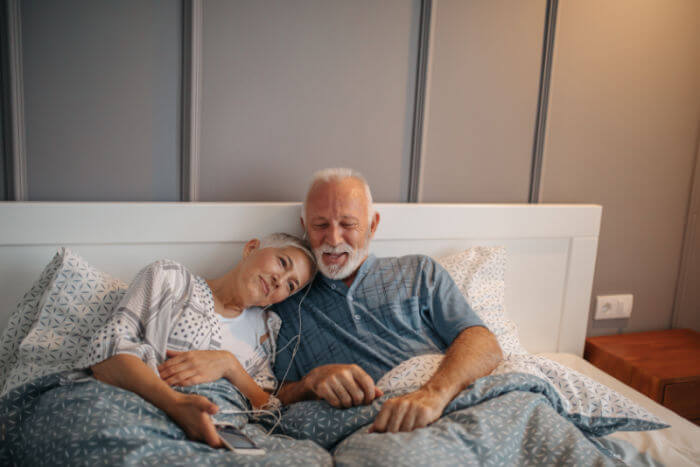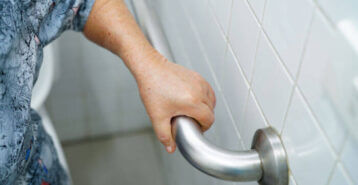Are you doing a walk in tubs project?
Modernize can pair you with three to four pros in your area, so you can compare options and save time and money.
Dorothy had it right when she said, “There’s no place like home.” The sad reality, though, is that few residences are properly set up for seniors who want to remain in their homes as they get older. Octogenarians will comprise nearly one-quarter all elderly citizens by 2050, the AARP reports, and 87 percent of seniors have stated they wish to live out their days in their current homes. In order to do this safely and comfortably, seniors have to set up their spaces – and bedrooms – for home accessibility.
According to the AARP, just 1 percent of homes in the U.S. are properly set up for seniors to comfortably age in place. Modernize created this guide on home accessibility considerations for the bedroom areas of the home. It is designed to help seniors and caregivers know what steps are needed to help their loved ones age more comfortably in their own homes.
What is Aging in Place?
Aging in place refers to seniors successfully remaining in their own homes as they get older. This is increasingly becoming a popular option for the elderly, rather than being forced to move to retirement homes, senior communities or managed-care facilities due to the increased demands age places on their daily living activities.

Our needs change as we get older, and new challenges arise as well. A few of the many issues facing seniors, especially those in their late 80s, 90s, and those with disabilities, include the following:
- Impaired vision and hearing
- Reduced strength and stamina
- Decreased mobility
- Diminished mental function
- Poor balance and stability
- Overall frailty
Any one of these issues could make it more difficult for seniors to remain living in their homes. The elderly often struggle with a combination of several of these impairments. Their ability to perform daily tasks such as running errands, cleaning their homes, personal hygiene and simply moving about their homes can be impacted.
There are steps caregivers and homeowners can take to help their seniors enjoy these simple freedoms as they age, however.
Home Accessibility Considerations for Bedrooms
The good news is that it is a relatively straightforward process to provide better physical accommodations for elderly homeowners. All that is required in many instances is some advanced planning and adherence to universal design standards, which will provide increased accessibility for seniors. These principles are centered around providing unfettered movement throughout the home and bedroom. They can also provide increased ease-of-use for fixtures and furnishings.
Here are five easy accessibility solutions for the bedroom to help seniors age in place and move about more comfortably.
- Replace door knobs with levers. Pushing down on a lever is easier for frail fingers than grasping and turning a knob.
- Purchase a lower-profile bed. This can simplify the process of lying down and getting out of bed.
- Install grab bars near the bed, if possible. This can provide seniors with something solid to grasp when necessary to prevent slips and falls.
- Place motion-sensor wireless lighting throughout the room. This modification can increase visibility. These battery-operated devices can be installed anywhere in the bedroom, as well as in hallways, closets and bathrooms. This way, seniors are never left fumbling in the dark for a light switch.
- Arrange furniture to reduce trip or fall hazards. The bed is typically the focal point of the bedroom. Accessory furniture, such as dressers, armoires and nightstands, should be physically secured to walls so they cannot tip over. Bedrooms large enough for a sofa, love seat or other sitting area should still have clear, unobstructed pathways for walkers and wheelchairs.
These are rather simple physical changes you can make to help your senior get around their bedroom easier. In the next section we’ll look at some aesthetic changes you can make as well.
Find the Right Contractor for Your Walk In Tubs Project
Whether you’re ready to begin your project now or need some expert advice, our network of contractors are here to help. With a few simple questions, we’ll find the best local professionals for you
Interior Design is Important for Home Accessibility
Interior design plays a big role in providing seniors with a comfortable place to live. Follow these three suggestions to increase the livability, ambiance and enjoyment of your senior’s bedroom.
Fabrics
Bed sheets should be a non-slip material, such as cotton or fleece, rather than satin or silk. Blankets should be thin and light enough to layer or remove as needed for comfort. Duvet covers typically are far more challenging to properly arrange and clean than bedspreads.
Colors
Neutral tones tend to provide a more soothing atmosphere than bold splashes of color. Your senior’s bedroom does not have to be dull and sterile, but it should not be visually jarring either.
Varying neutral color schemes by adding accent walls or different shades of taupes, browns, tans and creams is a mellow way to enhance a room’s atmosphere without disrupting its tranquility. You can always add splashes of color and highlights with pictures, rugs and other room décor.
Flooring
As in living rooms, seniors with mobility issues typically fare better on harder surfaces – such as hardwood and low-pile carpeting – than shag and other “high-pile” carpet materials in the bedroom.
There is a tradeoff, though. Hardwood is not very forgiving in the event of a fall. Non-skid area rugs can provide softness and warmth, but they also can impede accessibility and increase trip hazards for seniors using canes, motorized scooters, walkers or wheelchairs.
For bedroom accessibility, consider tight loop carpet for wheelchair accessibility or cork flooring for added comfort. Ultimately, make flooring choices based on what’s best for your senior’s long-term use, comfort and livability.
Bedroom Accessibility: the Bottom Line
Your senior’s bedroom serves many purposes, including shelter, private retreat, and resting place. Helping your senior age in place may require an extensive bedroom remodel, but chances are some advanced planning and the suggestions above will be enough to provide a secure, comfortable and safe space.
Find the Right Contractor for Your Walk In Tubs Project
Whether you’re ready to begin your project now or need some expert advice, our network of contractors are here to help. With a few simple questions, we’ll find the best local professionals for you
Reviews from Real Homeowners
Welcome to Homeowner Resources! We are the Modernize blog. Modernize pairs more than 3 million homeowners a year with pre-vetted contractors in their area. This blog started because we believe homeowners should know everything about their homes, from how their HVAC works to which front door colors they might love. On Homeowner Resources, you can find information on every part of your home, right down to how you can negotiate with contractors to get the best price. Here's more about the blog.
Need a contractor? Learn more about how Modernize finds the right pro for you.





